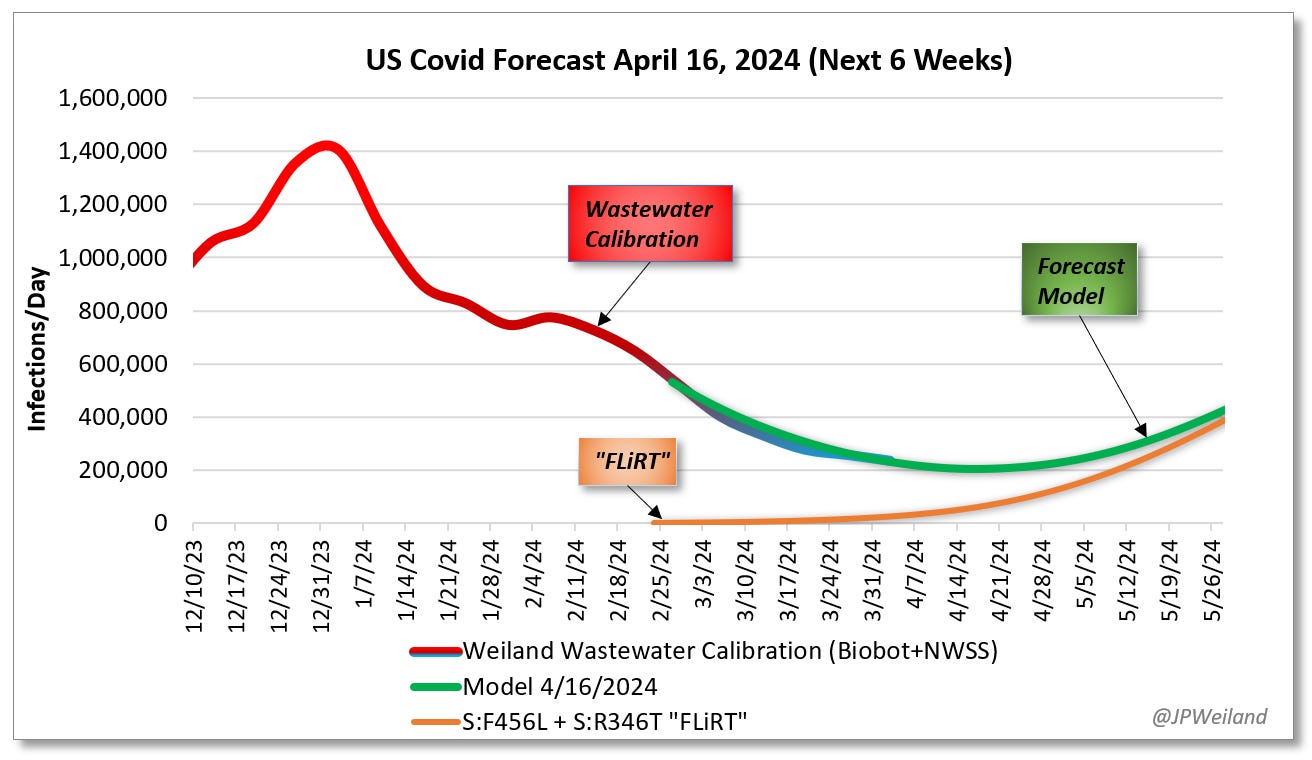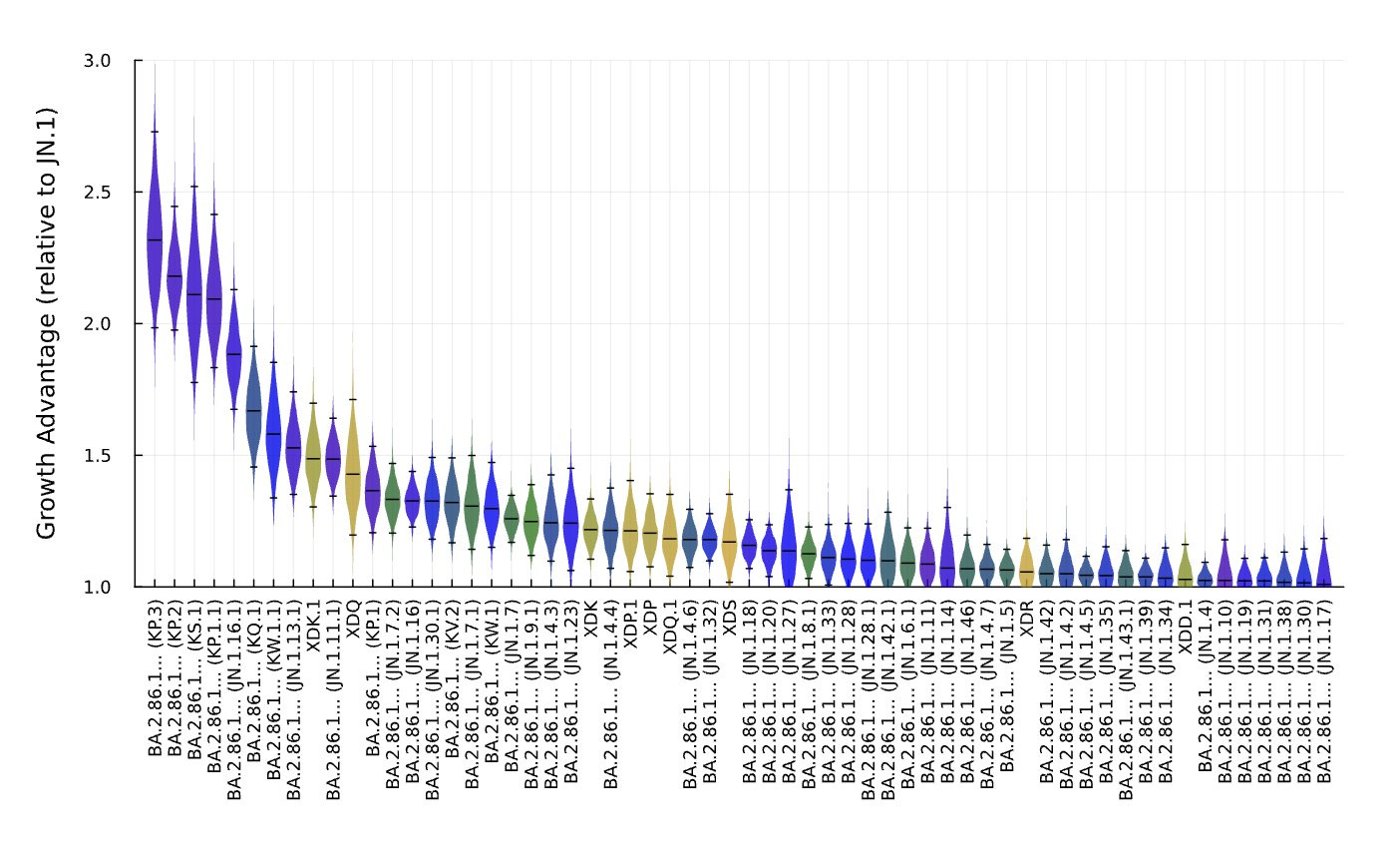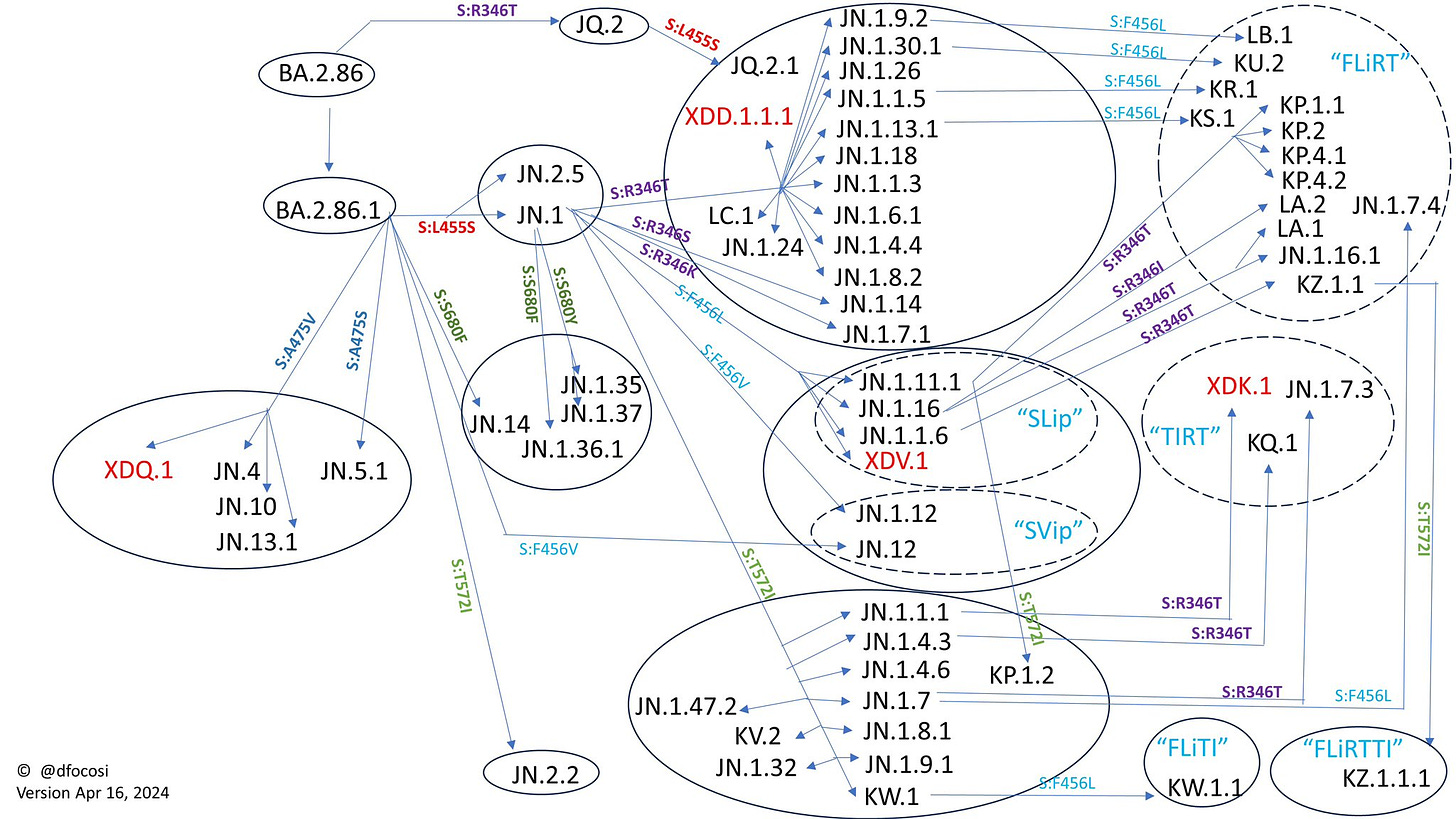"I’d rather not have to write about it, and haven’t for awhile. More than four years in, we’re all sick of Covid stuff and hope it’s behind us. And recent months have been good with a steady drop in hospitalizations and wastewater SARS-CoV-2 to their lowest levels since the summer of 2023. That’s great. But we’ve got to keep an eye on the constantly evolving virus, by natural selection to bypass our immune response and/or potentiate its infectivity—anything to find more hosts or repeat hosts. That’s why I will continue to stay on this important topic, even when it’s in the background like it is for most people right now.
"We saw the arrival of the hyper-mutated BA.2.87 show up in late 2023, with the look of an Omicron-like event by its sequence, that gave reason for concern. But it fortunately did not pick up new mutations enabling its ability to spread. On the other hand, we saw how the JN.1 variant (a descendant of BA.2.86 with added key functional mutations), became globally dominant, and induced a wave of infections this past winter. Now it has evolved further.
"Jay Weiland, my friend and data scientist, who has been accurately forecasting the Covid dynamics for some time, posted the graph below earlier this week extrapolating from wastewater data, an inflection point starting later this month.
"You may recall that JN.1 had a huge growth advantage over co-existing variants, like BA.2.86 and many others, that enabled its path to global dominance. The projected inflection now is tied to a decided growth advantage of new variants that are derivatives of BA.2.86/JN.1, as posted by Ben Murrell, as seen below (KP.3, KP.2, KS.1, KP.1.1), all with double or more advantage. (Thanks to Federico Gueli for bringing it to my attention.)
"What accounts for the advantage of these new variants to ultimately crowd out JN.1? It’s largely attributed to 2 added spike mutations: F for L at position 456 and R for T at position 346, which has been nicknamed the FLiRT group of variants. You can see those spike mutations compared with JN.1 for KP.3 and KP.2 below
Here is the updated convergence map from Daniel Focosi showing the new variants, such as KP.2, KP.1.1, KS.1 variants) in the top right corner.
"The real question now is whether this takeover by FLiRT mutations, a replacement in the works for JN.1, will translate to a new wave. My impression is that it won’t since they are mutations we’ve been exposed to before (specifically F456L and R346T). It’s hard to know for sure, since the context is quite different, now in a BA.2.86 framework rather than preceding major variants, and there are other mutations outside the spike, and changes in secondary and tertiary structure of the virus that are not taken into account. My projection is that we could see a wavelet but not a significant new wave of infections as a result of the FLiRT variants in the next couple of months. I think it will take a much bigger challenge of our immune response than what we see with the FLiRTs. We can’t necessarily count on that optimistic perspective. Time will tell.
"Higher risk individuals, which includes people age 65+ and immunocompromised, are eligible to get a second monovalent XBB.1.5 shot. There haven’t been any lab studies yet to determine how well that updated vaccine will fare against the FLiRT variants, but we’ll probably see some soon. The extent of immune evasiveness from such data will also help us predict the clinical toll of these variants."
----------------
There's more news as well, so go check out his newsletter. I have yet to get COVID (fingers crossed), so news of new variants always worries me.
















.jpg)
No comments:
Post a Comment